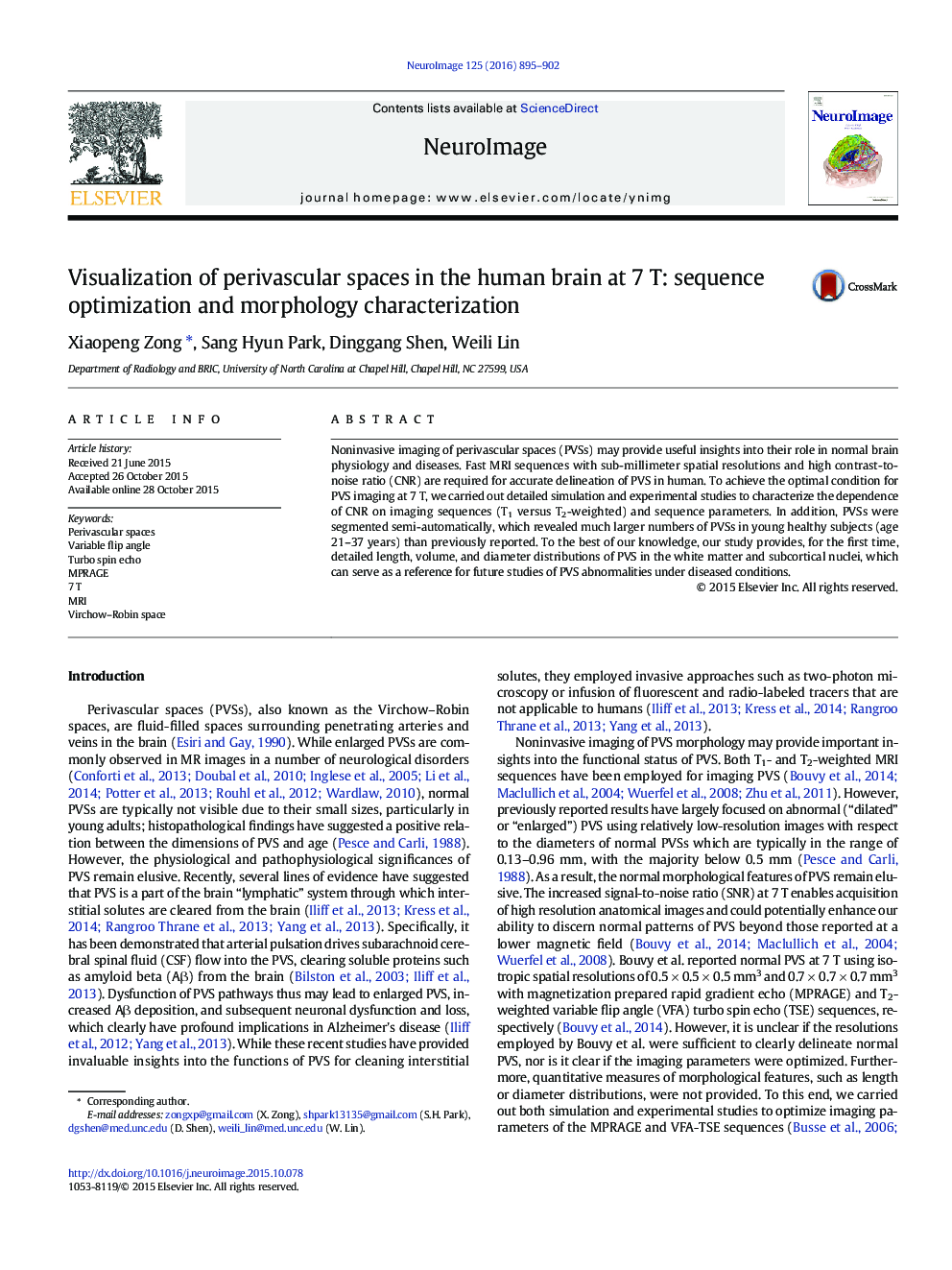| Article ID | Journal | Published Year | Pages | File Type |
|---|---|---|---|---|
| 6024197 | NeuroImage | 2016 | 8 Pages |
Abstract
Noninvasive imaging of perivascular spaces (PVSs) may provide useful insights into their role in normal brain physiology and diseases. Fast MRI sequences with sub-millimeter spatial resolutions and high contrast-to-noise ratio (CNR) are required for accurate delineation of PVS in human. To achieve the optimal condition for PVS imaging at 7Â T, we carried out detailed simulation and experimental studies to characterize the dependence of CNR on imaging sequences (T1 versus T2-weighted) and sequence parameters. In addition, PVSs were segmented semi-automatically, which revealed much larger numbers of PVSs in young healthy subjects (age 21-37Â years) than previously reported. To the best of our knowledge, our study provides, for the first time, detailed length, volume, and diameter distributions of PVS in the white matter and subcortical nuclei, which can serve as a reference for future studies of PVS abnormalities under diseased conditions.
Related Topics
Life Sciences
Neuroscience
Cognitive Neuroscience
Authors
Xiaopeng Zong, Sang Hyun Park, Dinggang Shen, Weili Lin,
